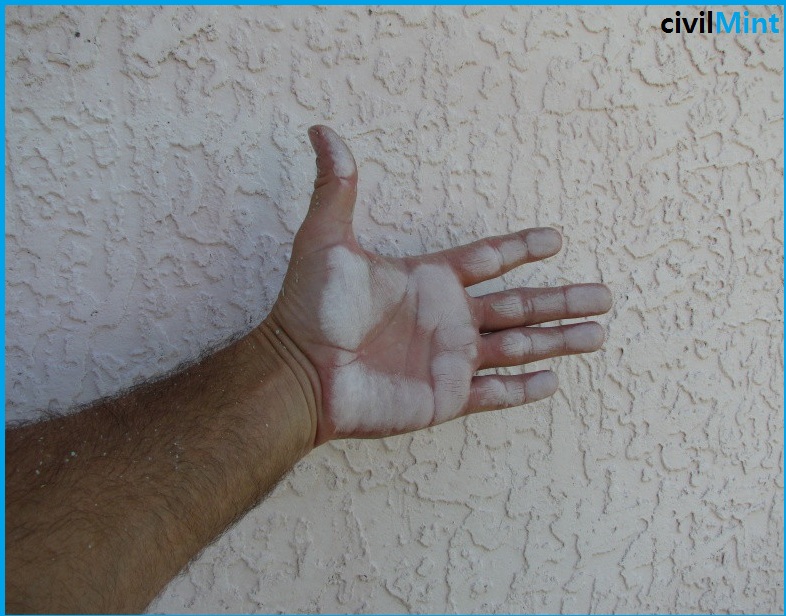The word ‘chalking’ refers to the formation of a white, chalky powder on the surface exterior surface of the paint.
This condition often occurs when the paint is weathered and the binder is exposed to sunlight and moisture to slowly decompose, weakening the bond between the pigment and the binder. Over time, almost all paints will develop some backing when exposed to the outside air.

Have you ever touched a wall and your hands have become powdery? This is due to a paint defect called paint chalking. There are numerous reasons behind this.
Paint chalk is the formation of a powdery substance on the painted surface. This spoils the paint and creates an unpleasant interior finish.
You may have to face the embarrassment of sticking powdered material to the wall in front of your guests.
In this article, we will discuss paint chokes, their causes, detection, prevention, and correction methods.
Table of Contents
What Is Paint Chalking?
Paint chalk is the formation of a very fine, light-colored, powder coating on painted walls. It is observed on walls exposed to the atmosphere, i.e., outside the building.
Paint backing on the exterior surface is common. However, it can also occur on internal walls. The main cause of paint chalk is the wear of paint over time.
The chalkiness of paints is one of the most important paint defects. Other major paint defects are flakes, flakes, discoloration, cratering, blisters, frosting, and friction.
Possible Causes of Paint Chalking
- Oil paints are more susceptible to chalk than latex formulations.
- Use of low-grade, dark-colored paint.
- Prefabricated siding may result in an excessively thick layer of chalk and may require high-pressure washing to completely remove the chalk.
- Use of interior paint for exterior.
- Insufficient sealing of porous surfaces.
- The coating is too thin (eg paint or stains).
- Applying too thin paint.
How to Fix Paint Chalking
- First, check the level of chalkiness by rubbing the surface with your finger or cloth.
- If the choke is severe, remove the remaining choke by high-pressure washing or sandblasting. Rinse the walls with pressurized water. You can also use detergent/soap with a brush. Rinse the surface thoroughly.
- For light chalk, use a wire brush or sandpaper to remove the chalk. Then rinse the surface.
- Let the surface dry for at least 24 hours.
- Check the surface again with your finger or cloth to check the amount of chalk residue. Priming is not required if there is little or no chalk left and the old paint is in good condition.
- However, if light or medium chalk remains, use a penetrant in the first coat of water-based paint to ensure that the paint film adheres to the surface of the chalk. 100% acrylic coatings provide better chalk resistance than vinyl acrylic paints.
- If you still have some chalk that stands out, use an alkyd-based masonry primer as your first coat of paint. Cover it with a high-quality top coat.
